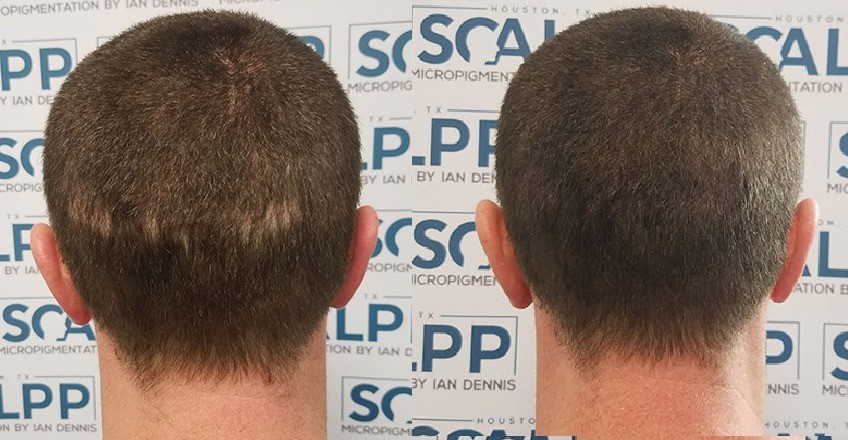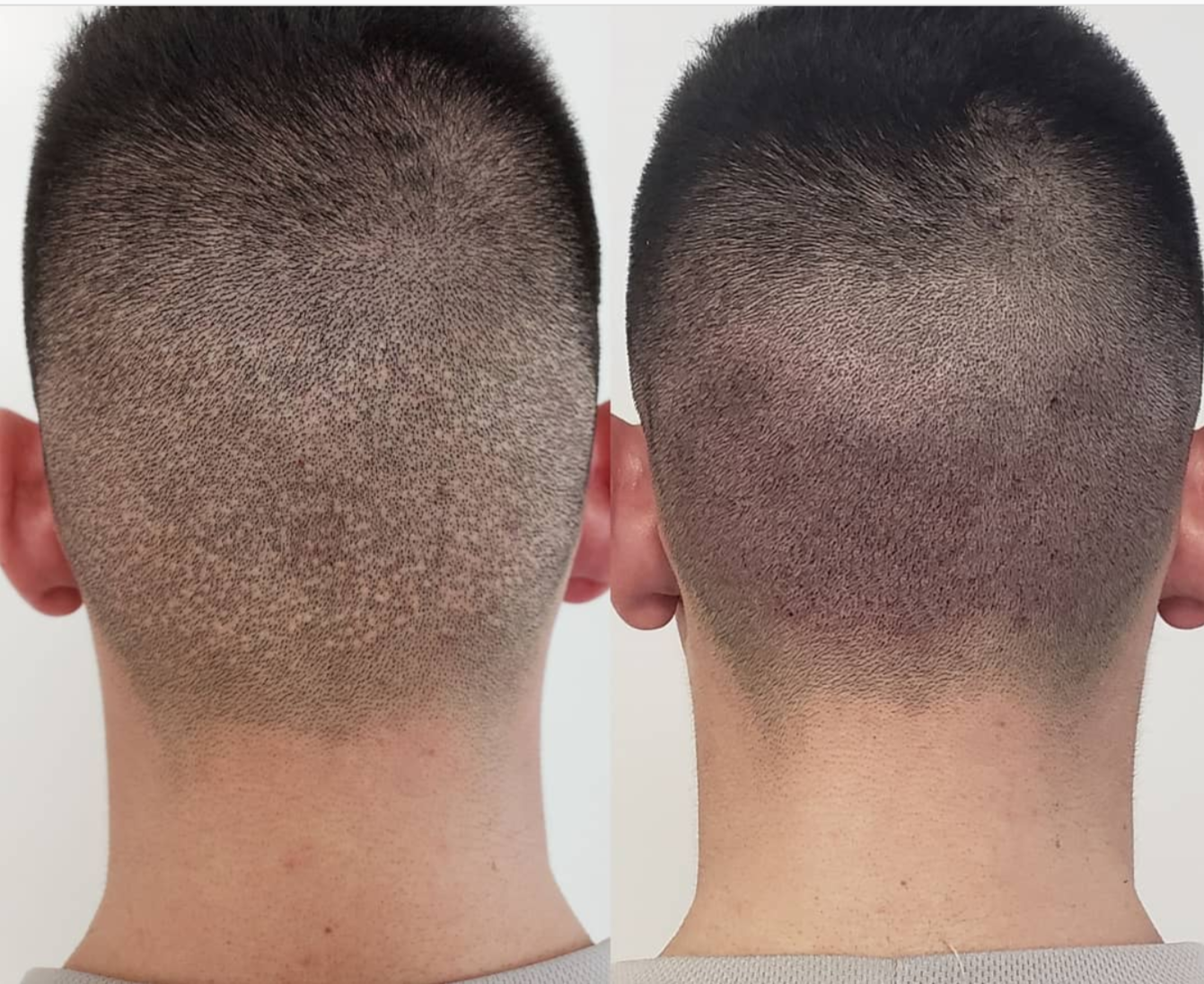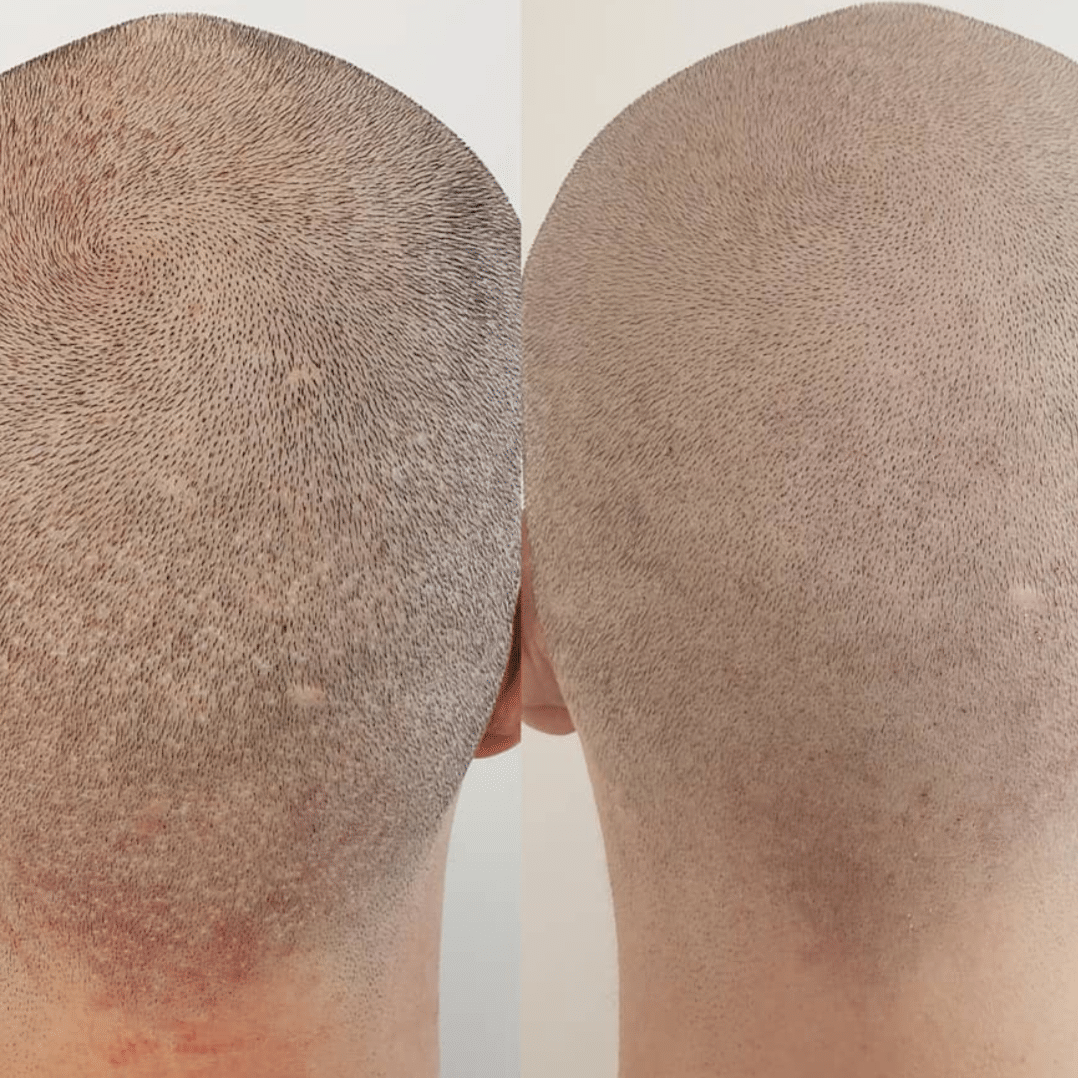Scalp Micropigmentation
For Scar Revision
The best solution for scar concealment
Thousands of men every year undergo hair transplant surgery in Texas. Although patient outcomes can be favorable, an unfortunate and inevitable consequence is the production of significant scarring in both the donor and recipient zones. Scalp micropigmentation can be used to hide these scars.
Scalp micropigmentation is routinely used to camouflage all types of head scars, including those resulting from all methods of hair transplant surgery.
The most common type is the ‘strip’ scar. These are created during FUT (Follicular Unit Transplantation) surgery and are usually sited at the back of the head, often stretching from ear to ear.
FUT surgery is being slowly phased out in favor of the more advanced FUE method. FUE (Follicular Unit Extraction) causes multiple ‘dot’ scars in the donor area that are less visible than FUT scars, but usually cover a wider area. Scalp micropigmentation is the perfect solution for these scars, and excellent results can be achieved by the most skilled practitioners.
Finally, we also help our clients to conceal ‘plug’ scars and ‘cobblestoning’, names given to scars from historic (and often crude) hair transplant work. Most people who have these types of scars have carried them for many years, and the sense of relief after a high quality scalp micropigmentation procedure cannot be overstated.
What is the required hair length for best results?
Effective camouflage can be achieved with the surrounding hair kept at almost any length. The photos on this page demonstrate a successful scar concealment on a client who has chosen not to shave their head. Equally good results, better in fact, are achieved for clients who shave their hair.
Clients who do not want to shave their hair, but cut their hair shorter than 1cm long, may struggle to achieve optimal results. The hair needs to be shaved, or kept longer than 1cm for the best camouflage, particularly when hiding ‘strip’ (FUT) scars.
Please contact us for guidance. For the most accurate advice, a face to face consultation is ideal so we can closely examine your scar and the surrounding area. Alternatively if you are unable to attend a consultation, we can usually provide advice and a quotation based on your photographs.



